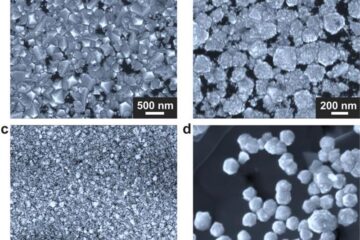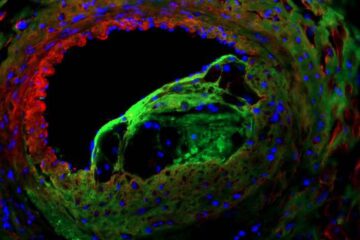Computer determines perfect makeup in a flash

The virtual makeup can then be evaluated in different lighting conditions. The researchers will present this new program at the CeBIT 2011 in Hanover from March 1st through the 5th at the Saarland research booth (hall 9, booth B43).
The researchers at the Max Planck Institute had to first photograph roughly 60 women’s faces with and without makeup and in different lighting conditions. Then all the photos were used to compile three-dimensional models of the faces on the computer. “With these spatial models we can precisely analyze and evaluate the color of skin, eyes and hair as well as the shape of the face. We have collected these features in a data-bank against which the new faces can be matched,” Kristina Scherbaum, who developed the program at the Max Planck Institute, explains. It is with her calculation methods that the computer automatically concludes which makeup best accentuates and embellishes the facial features of a particular woman.
“We also take into consideration certain personal facial characteristics, like freckles or moles. Furthermore, we can determine whether or not already existing makeup on a woman suits her face,” Kristina Scherbaum adds. The software can even transfer a particularly lovely makeup scheme from one photo to an other portrait. “This could be helpful, for example, for makeup artists in training. They would also have the possibility to determine the ideal face for a tried and tested makeup scheme from the catalogued data,” says the computer scientist. At the CeBIT computer trade fair the researchers from the Max Planck Institute in Saarbrücken will show examples of how a suitable makeup scheme can be assigned to a photo of a woman not wearing makeup.
The makeup program is the result of fundamental research at the Max Planck Institute for Computer Science in Saarbrücken. The same calculation methods used for the makeup software can also be used to predict facial age progression. Kristina Scherbaum was also able to show which facial features of a computer figure appear more masculine or more feminine. “One of our research goals is to develop even more realistic characteristics for computer animation and movies, for virtual figures, too, should be able to age or to show feelings of emotion naturally,” says Scherbaum. This is one of many ways in which three-dimensional models of faces can be utilized.
Contact:
Kristina Scherbaum
Tel . +49 681 / 302-70151
Mail scherbaum@mmci.uni-saarland.de
Friederike Meyer zu Tittingdorf
Tel. 0+49 81 / 302-3610
Mobil +49 151 / 11 37 16 32
Tel: +49 511 / 89 49 70 22 (Cebit booth)
Samir Hammann
Max-Planck-Institut Informatik
PR Manager
s.hammann@mpi-inf.mpg.de
Tel. +49 681 / 9325-454
Information for radio journalists: If you would like to arrange a telephone interview with researchers and students from Saarland University in studio quality (Audio-ISDN-Codec), please contact Friederike Meyer zu Tittingdorf at the press office.
Media Contact
All latest news from the category: CeBIT 2011
Newest articles

Making diamonds at ambient pressure
Scientists develop novel liquid metal alloy system to synthesize diamond under moderate conditions. Did you know that 99% of synthetic diamonds are currently produced using high-pressure and high-temperature (HPHT) methods?[2]…

Eruption of mega-magnetic star lights up nearby galaxy
Thanks to ESA satellites, an international team including UNIGE researchers has detected a giant eruption coming from a magnetar, an extremely magnetic neutron star. While ESA’s satellite INTEGRAL was observing…

Solving the riddle of the sphingolipids in coronary artery disease
Weill Cornell Medicine investigators have uncovered a way to unleash in blood vessels the protective effects of a type of fat-related molecule known as a sphingolipid, suggesting a promising new…

















